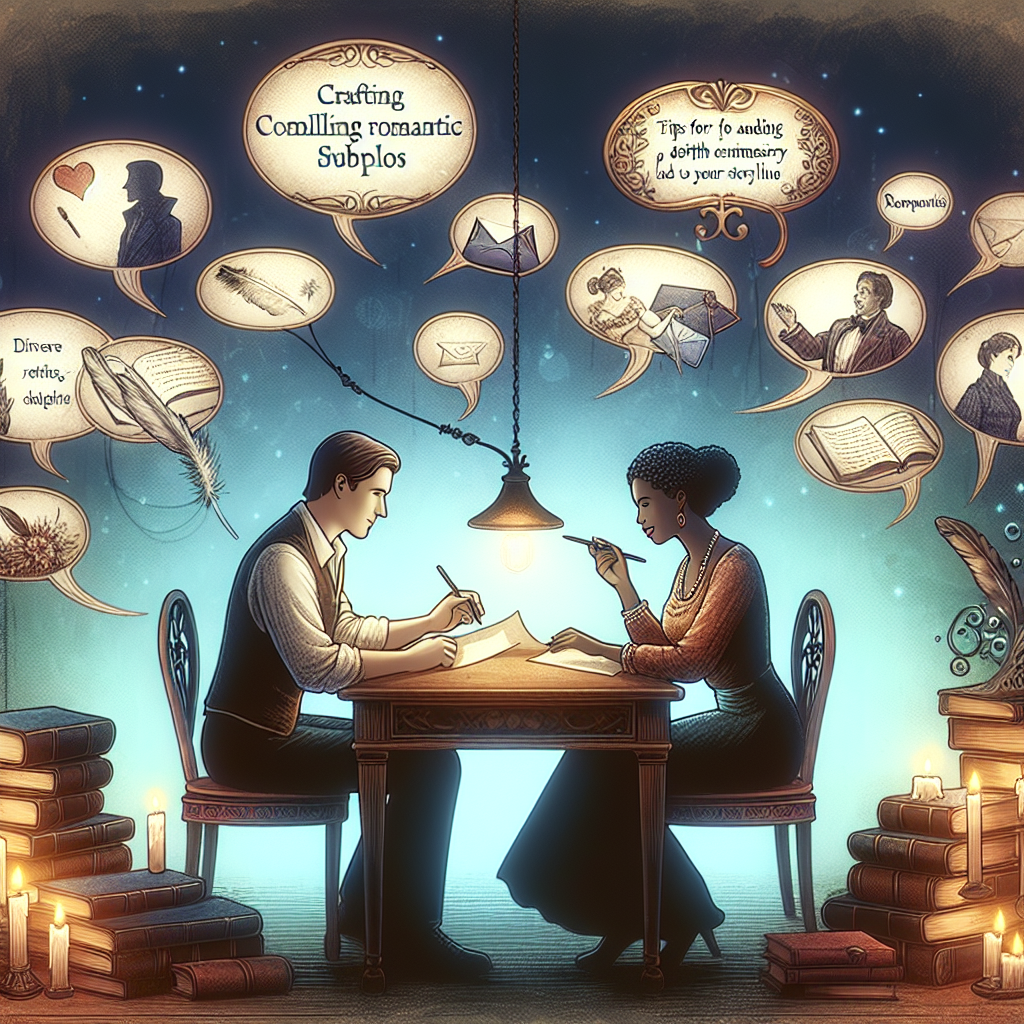Crafting Compelling Romantic Subplots: Tips for Adding Depth and Chemistry to Your Storylines
In the world of literature and storytelling, crafting an engaging romantic subplot can add layers of depth and emotional resonance to a narrative. Whether it’s a secondary storyline in a novel or a central focus in a film, the interplay between romantic characters can captivate audiences and provide a rich, dynamic backdrop for the main plot. In recent years, the art of crafting compelling romantic subplots has evolved, incorporating new trends and techniques to create authentic and engaging relationships on the page or screen.
The importance of developing well-rounded and believable romantic subplots has never been more critical than in today’s storytelling landscape. With audiences craving authentic and relatable characters and relationships, writers are challenged to create narratives that not only entertain but also resonate on a deeper emotional level. As the demand for diverse and inclusive representation continues to grow, the need for thoughtfully crafted romantic subplots that explore complex themes and dynamics has become increasingly essential.
Section 1: Understanding Character Dynamics
One key element in crafting compelling romantic subplots is developing dynamic and multi-dimensional characters. By creating protagonists with unique personalities, motivations, and conflicts, writers can establish a strong foundation for a believable and engaging romantic relationship. Expert commentators in the field of storytelling emphasize the importance of building chemistry between romantic leads through well-developed characters that complement and challenge each other.
Section 2: Establishing Conflict and Tension

Another crucial aspect of crafting compelling romantic subplots is establishing conflict and tension within the relationship. By introducing obstacles and challenges that test the bond between romantic characters, writers can create a sense of drama and intrigue that keeps audiences invested in the outcome. From external forces such as social expectations or rivalries to internal struggles like insecurities or past traumas, conflict can add depth and complexity to a romantic subplot.
Section 3: Building Emotional Resonance
A successful romantic subplot relies on the emotional resonance it evokes in audiences. By delving into the characters’ inner thoughts, feelings, and desires, writers can create a sense of intimacy and connection that draws readers or viewers into the story. Expert storytellers stress the importance of authenticity and vulnerability in portraying romantic relationships, allowing for moments of tenderness, passion, and heartache that resonate with audiences on a personal level.
Section 4: Future Trends and Innovations
Looking ahead, the future of crafting compelling romantic subplots is likely to continue evolving with changing societal norms and storytelling conventions. As technology advances and new platforms for storytelling emerge, writers will have unprecedented opportunities to explore innovative ways of portraying relationships and romance. From interactive narratives that allow audiences to shape the course of a romantic subplot to virtual reality experiences that immerse viewers in a romantic world, the possibilities for creative storytelling are boundless.
In conclusion, crafting compelling romantic subplots is a nuanced and intricate art form that requires skill, empathy, and creativity. By focusing on character dynamics, conflict, and emotional resonance, writers can deepen the impact of their narratives and create memorable and engaging stories. As storytelling techniques evolve and audience expectations shift, the art of crafting romantic subplots will continue to adapt and innovate, pushing the boundaries of traditional storytelling and exploring new avenues for emotional connection and storytelling.

